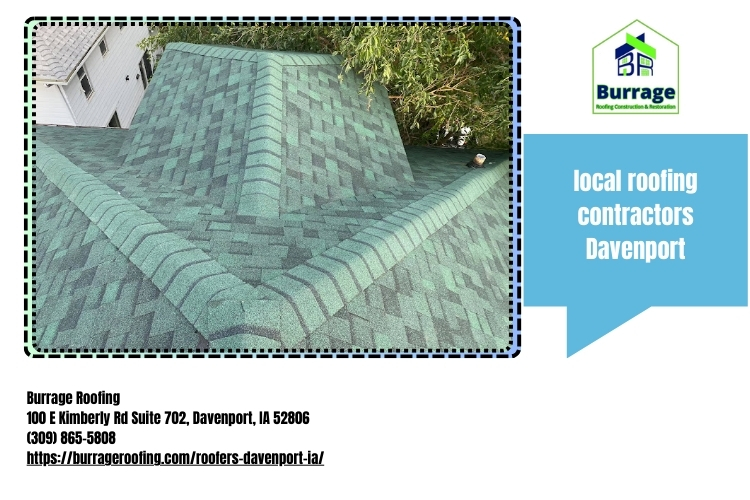When it comes to roofing, the choices can be overwhelming. Various materials offer different benefits and drawbacks, making it essential to choose wisely for your home or business. With that in mind, let’s delve into the world of roofing materials with expert insights from Burrage Roofing - Quad Cities.
Understanding Different Types of Roofing Materials with Burrage Roofing
Choosing the right roofing material is a critical decision that impacts not roofing contractors only the aesthetic appeal of your property but also its longevity and energy efficiency. The right roof protects against harsh weather conditions while enhancing curb appeal. Let’s explore various types of roofing materials used in residential and commercial roofing projects.
1. Asphalt Shingles
What Are Asphalt Shingles?
Asphalt shingles are among the most popular roofing materials due to their affordability and ease of installation. They consist primarily of fiberglass matting, asphalt, and granules that add color and UV protection.
Benefits of Asphalt Shingles
- Cost-effective: One of the primary reasons homeowners opt for asphalt shingles is their low cost compared to other materials. Variety: They come in a wide range of colors and styles, allowing for customization. Easy Installation: Asphalt shingles are lightweight and easy to install, reducing labor costs significantly.
Drawbacks of Asphalt Shingles
- Lifespan: While they may last 15 to 30 years, they have a shorter lifespan than other materials. Weather Vulnerability: Extreme temperatures can cause them to crack or warp.
2. Metal Roofing
What Is Metal Roofing?
Metal roofing comprises various metals like steel, aluminum, or copper. It has gained popularity due to its durability and long lifespan.
Benefits of Metal Roofing
- Longevity: Metal roofs can last 40-70 years with proper maintenance. Energy Efficiency: They reflect solar heat, which can reduce cooling costs in hot climates. Environmentally Friendly: Many metal roofs are made from recycled materials.
Drawbacks of Metal Roofing
- Initial Cost: The upfront cost can be higher than asphalt shingles. Noise: Rain or hail can make metal roofs noisier than other options unless soundproofing measures are taken.
3. Tile Roofing
What Is Tile Roofing?
Tile roofs are made from clay or concrete tiles that provide a distinct aesthetic appeal while offering great durability.

Benefits of Tile Roofing
- Aesthetic Appeal: Available in various colors and shapes, tile roofs enhance curb appeal tremendously. Durability: They can last over 50 years if maintained properly.
Drawbacks of Tile Roofing
- Heavyweight: Tile roofs require a strong structural support system due to their weight. Installation Cost: Higher installation costs compared to asphalt shingles.
4. Slate Roofing
What Is Slate Roofing?
Slate is a natural stone that has been used for centuries as a premium roofing material due to its elegance and longevity.
Benefits of Slate Roofing
- Exceptional Lifespan: Slate roofs can last over 100 years when properly installed and maintained. Fire Resistant: Slate is naturally fire-resistant, providing an additional layer of safety for your home.
Drawbacks of Slate Roofing
- High Cost: Slate is one of the most expensive roofing materials available. Installation Complexity: Requires specialized skills for installation due to its weight and fragility.
5. Wood Shake & Shingle Roofs
What Are Wood Shake & Shingle Roofs?
Wood shake roofs are made from split logs (shakes), while shingles are machine-cut into uniform sizes. Both options offer a rustic aesthetic choice for homes.
Benefits of Wood Shake & Shingle Roofs
- Natural Insulation Properties: Provides better insulation compared to some synthetic materials.
Drawbacks of Wood Shake & Shingle Roofs
- Maintenance Needs: Requires regular treatment against rot, insects, and mold.
6. Composite Shingles
What Are Composite Shingles?
Composite shingles combine various materials like fiberglass, wood fibers, plastics, or recycled products designed to mimic traditional shingles' look without the disadvantages associated with them.
Contact Us
If you're considering a new roof or need repairs in Davenport or surrounding areas, reach out to us!
Contact Us
Burrage Roofing - Quad Cities
Address: 100 E Kimberly Rd Suite 702, Davenport, IA 52806, United States
Phone: (309) 865-5808
7. Built-Up Roofs (BUR)
What Are Built-Up Roofs (BUR)?
Built-up roofs consist of multiple layers of bitumen surfaces alternating with ply sheets topped off with gravel or aggregate material.
Understanding Different Types of Roofing Materials with Burrage Roofing
Let's summarize what we have covered so far regarding various roofing types by addressing common questions people may have about these materials:
FAQs About Different Types of Roofing Materials
What type of roof lasts the longest?- Slate roofs typically last over 100 years when properly maintained; however, metal roofs also provide long-lasting durability at around 40–70 years.
- Yes! They’re cost-effective and come in various styles but may require more frequent replacement than some other options.
- Although metal roofs can rust if improperly coated or maintained over time, modern coatings significantly reduce this risk.
- Consider factors such as climate resilience, aesthetics preference, budget constraints, and expected lifespan when making your choice.
- Yes! Underlayment provides extra protection against leaks while also adding insulation properties.
- Depending on material quality—most homeowners should plan on replacing their roof every 20–50 years based on local conditions!
Conclusion
In summary, understanding different types of roofing materials with Burrage Roofing equips you with knowledge essential for making informed decisions about your home's future. Each type presents unique advantages tailored towards specific needs—be it budgetary constraints or aesthetic preferences!
For all your roofing needs in the Quad Cities area including Davenport—consider contacting Burrage Roofing today! Our experienced team is here ready—to assist you every step along this journey toward securing a safe reliable rooftop above your head!
This comprehensive guide aims at demystifying what could otherwise feel like an overwhelming task—selecting appropriate covering solutions tailored just perfect enough for individual requirements!